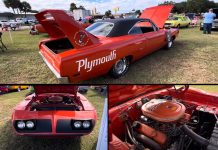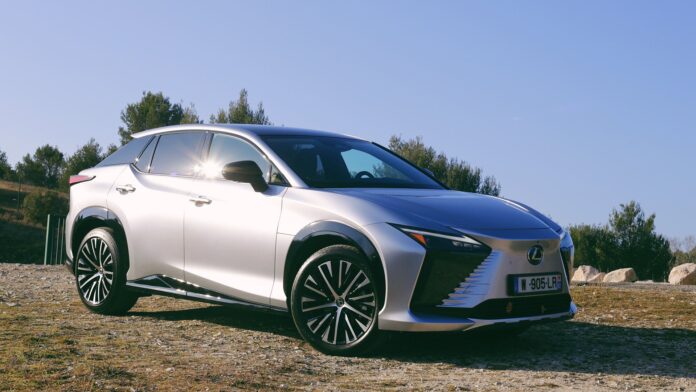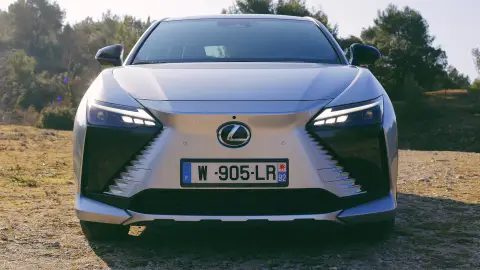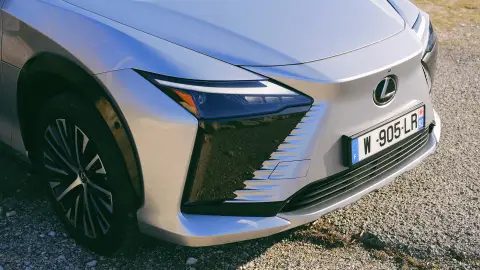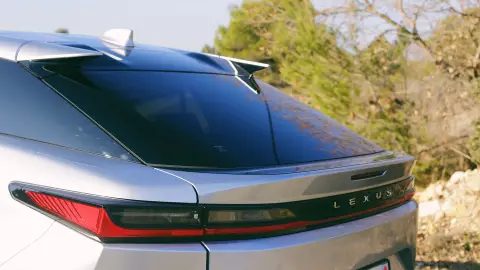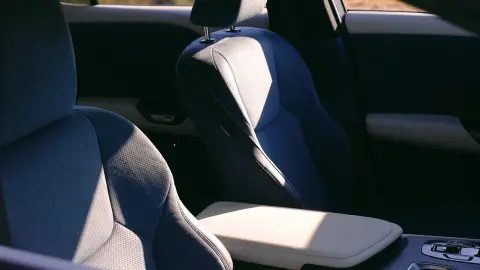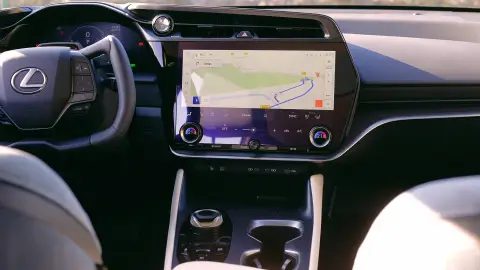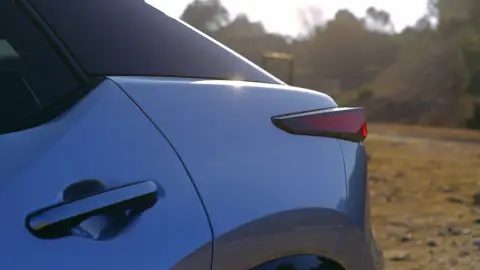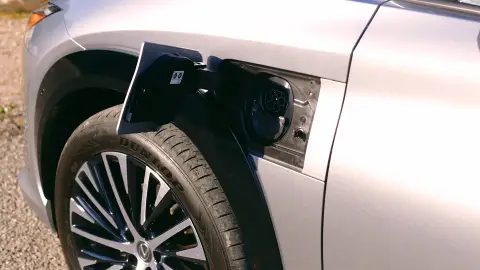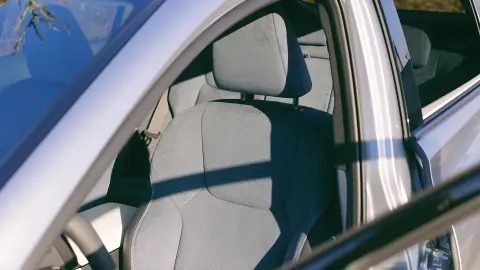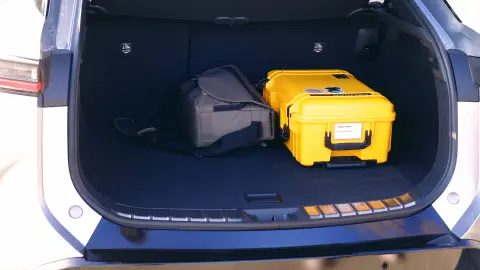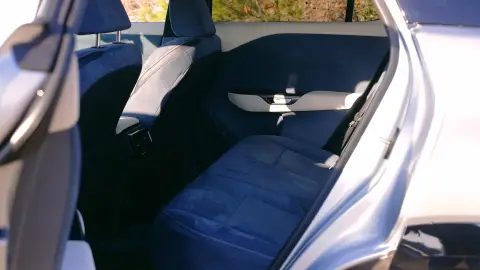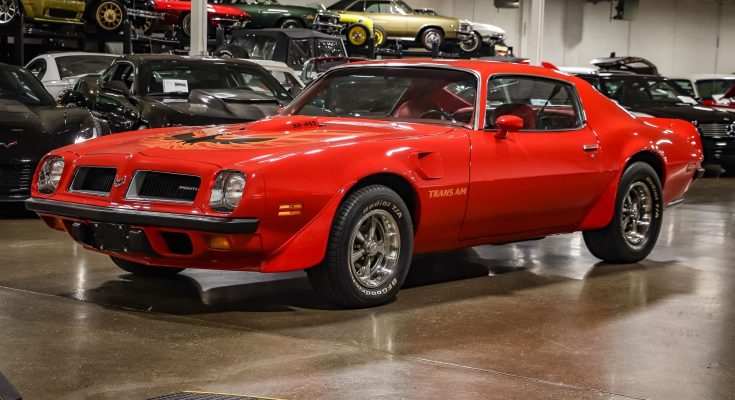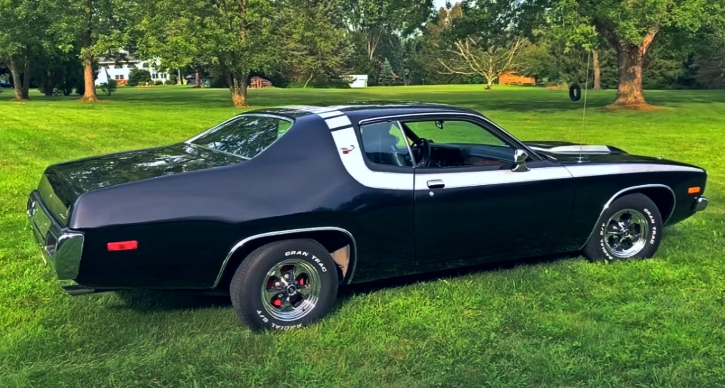Contrary to what some might think, Lexus is only just now introducing its first battery-electric vehicle to the U.S. market. It’s not its first shot at an EV, though, between the foreign market UX 300e and what Toyota’s lineup has looked like over the past couple of years, the luxury automaker has more than enough know-how when it comes to electrification. Plus, It’s built up as many as seven forms of hybrid in its portfolio. To kick off its kW-only efforts with a bang in North America, it’s introduced the 2023 Lexus RZ 450e, a sporty, slender crossover.
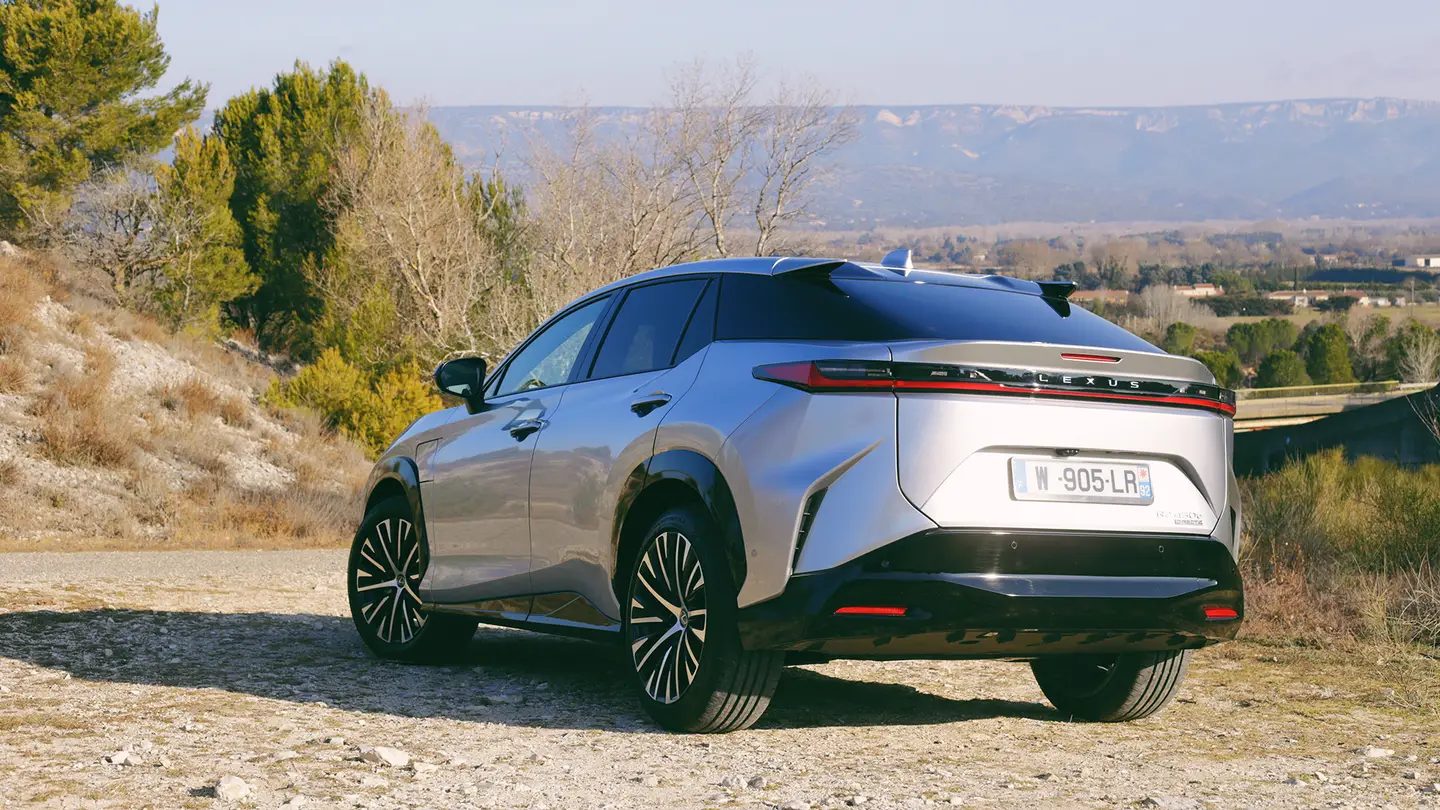
It’s smaller than the RX but larger than the NX, and has a few major goals it’d like to achieve: be fun to drive, appeal to a younger market, and be an easy transition for any internal combustion vehicle owner who’s looking to take the plunge into the plug life for the first time.
What Lexus has come up with in the RZ is immensely compelling, indeed fun to drive, and features some extra-neat intuitive tech that could help chart the company’s course for future enthusiastic offerings. All of these are perfectly captured in one of its main showpieces, too: the optional yoke-style steering wheel.
2023 Lexus RZ 450e Specs
- Base price (Luxury AWD as tested): $59,650 ($65,150)
- Powertrain: 71.4-kWh battery | 150-kW front and 80-kW rear motors | 1-speed transmission | all-wheel drive
- Horsepower: 308
- Torque: 330 lb-ft
- Curb weight: 4,564 pounds
- Seating capacity: 5
- Cargo volume: 23.7 cubic feet behind second row | 55.6 cubic feet behind first row
- EPA fuel economy: 115 mpge city | 98 highway | 107 combined
- Range: 220 miles (196 miles with 20-inch wheels)
- Quick take: Excellent driving dynamics matched by appropriate spaciousness and luxury.
- Score: 9/10
The Basics
To start, familiarity permeates across the RZ’s sheet metal. Its design indeed looks very Lexus, from its sharp LED headlights and signature wide “grille” area to lines that resemble other vehicles in its crossover lineup, like the latest RX. The RZ has a more chiseled and athletic physique though, which at first might seem unappealing to anyone concerned with interior space.
However, I’m here to report that you shouldn’t judge a book by its cover—the interior is an all-around excellent place to be. I’m a few inches over six feet tall and had ample head, shoulder, and leg room. Back seat room behind me was respectable for the vehicle’s overall dimensions, but I wouldn’t call it commodious.
Additionally, the interior’s surfaces were made of pleasant, substantial material, overall visibility was excellent, and the cabin in no way felt claustrophobic. The latter is largely thanks to its massive panoramic roof, which can be optioned with what Lexus calls Dynamic Sky; at the press of a button, it dims from clear glass to a translucent, harsh-sun-blocking softbox. It’s a warm and welcoming place to be.
Physical controls are fairly minimal and occupant-machine communication is instead largely left to Lexus’ latest infotainment software housed in a 14-inch screen, though, thankfully volume control and the dual-zone climate controls still use physical knobs. I had no qualms about this infotainment system as it was quite easy to get used to. As were the various steering wheel controls, particularly for turning advanced driver assistance tech on and off, which functioned quite well.
One option that Lexus offers to conserve as much juice as possible is to provide cabin heat via radiant heat paneling built into the lower dashboard and where the glovebox would normally be. Call it an automotive interior space heater. Lexus does this by piping coolant from the battery pack, and it doesn’t get hot enough to harm occupants (that’d be wild if it did). Though, I could definitely see it catching an unknowing front-seat passenger off-guard. Lexus says the system uses 240 watts compared to a traditional blower-type heating system’s 5,000. Don’t worry, glovebox duties were delegated to a large center armrest compartment, as well as a somewhat secretive storage area in the center console below it.
Traditional heated seats are standard as well.
Driving Experience
One of the key ways for any automaker to stand out in the EV realm is to make the cars fun to drive, and I’m happy to report that Lexus has accomplished this with the RZ 450e. Featuring MacPherson strut front and fully independent, double wishbone rear suspension, plus a strong emphasis on overall chassis rigidity (the battery pack is considered a stiffened chassis component), the RZ was easy to grab by the horns and instantly toss around on twisty, tight roads.
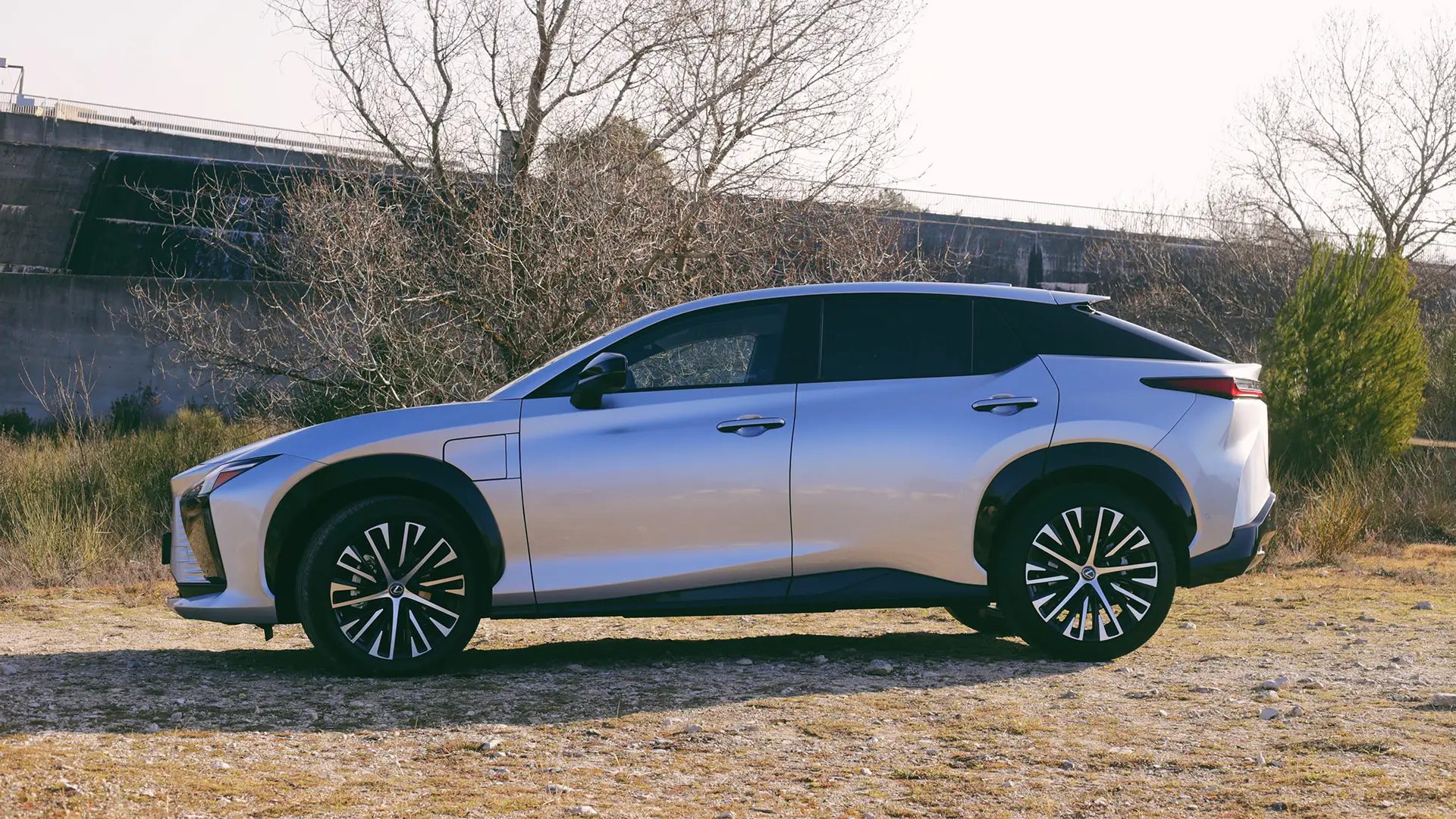
Speaking of horns, let’s address the elephant in the room: Lexus’ Steer by Wire technology, also known as the yoke. The brand’s still in the process of putting thought into it, too, as we might not see it in the U.S. until 2025. This being a fully wired system, it has no physical connection to the front wheels and instead possesses a redundant backup motor in case the first one fails, plus a 12-volt backup power supply expressly for this function.
Steer by Wire was surprisingly easy to get used to. It possesses an immensely variable steering ratio that makes low-speed maneuverability a cinch yet solidifies at highway speeds for confident stability. The only two aspects that took some getting used to were re-programming my brain not to go hand-over-hand while situating it in tight quarters for photos, as well as turning onto fast roads from a stop. The latter is a little awkward, but not dangerous at the hands of a cognizant human being—though, prove me wrong, future viral RZ crash YouTube videos.
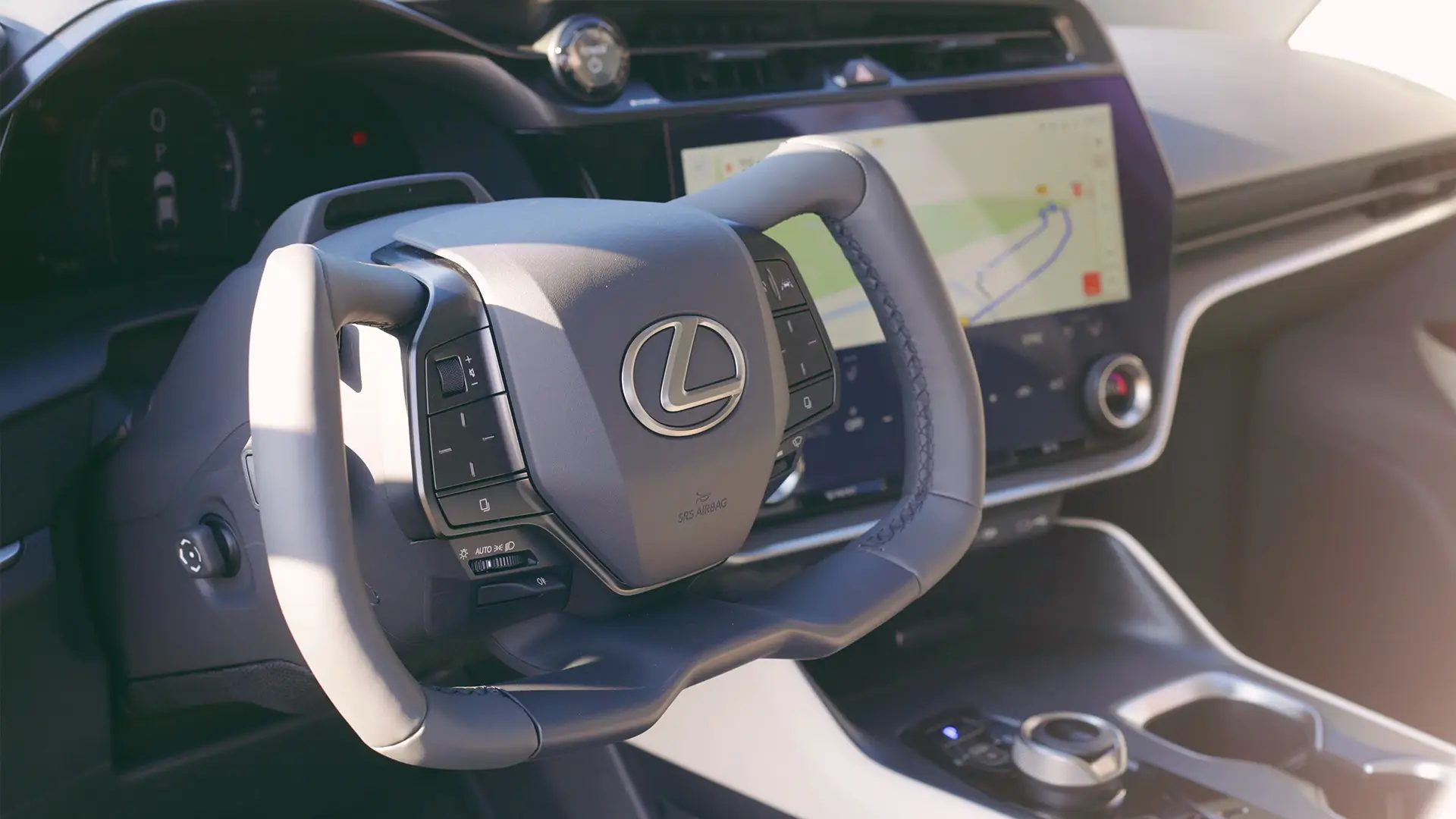
If we want to be particularly picky, Steer by Wire’s “shifters”—which simulate engine braking to perform regenerative braking duties in several degrees of intensity—are two awkwardly placed plastic triggers rather than paddles. Wildly, their pull was reminiscent of a ‘90s arcade gun game; I never thought I’d make a comparison to the Terminator 2: Judgment Day arcade game in a car review, but here we are.
As far as how the RZ steered, it was direct, confident, and accompanied by a brilliantly solid chassis with great overall damping. The feel was fine for a new electric rack and the weight was perfect in Sport mode. Believe it or not, the RZ’s shocks aren’t tuned for optimal comfort and I was a little surprised by how focused they were. Bumps and rough tarmac were dispatched to the driver’s seat, though they didn’t feel too stiff and the ride wasn’t any degree of choppy. Instead, you can tell engineers took their sweet time tuning compression and rebound.
Granted, the roads we rolled over were generally smooth and free of any significant bumps, potholes, or washboarding—I’ll be interested to see how the RZ rolls over American roads, particularly those of the notoriously shitty variety in Southern California.
When it comes to acceleration and deceleration, the RZ possessed fun power delivery and a precise brake feel. Acceleration, especially a foot-to-the-floor launch, didn’t dilate my pupils with instant torque like a typical high-end EV might but instead erred on the progressive side. This is a strong sign that Lexus is really after people who are used to gas-burning fare. Make no mistake, though, it still had a nice initial shove and was amply quick; 308 horsepower and 320 lb-ft of torque are enough to push its 4,500-pound stature to 60 mph in five seconds flat.
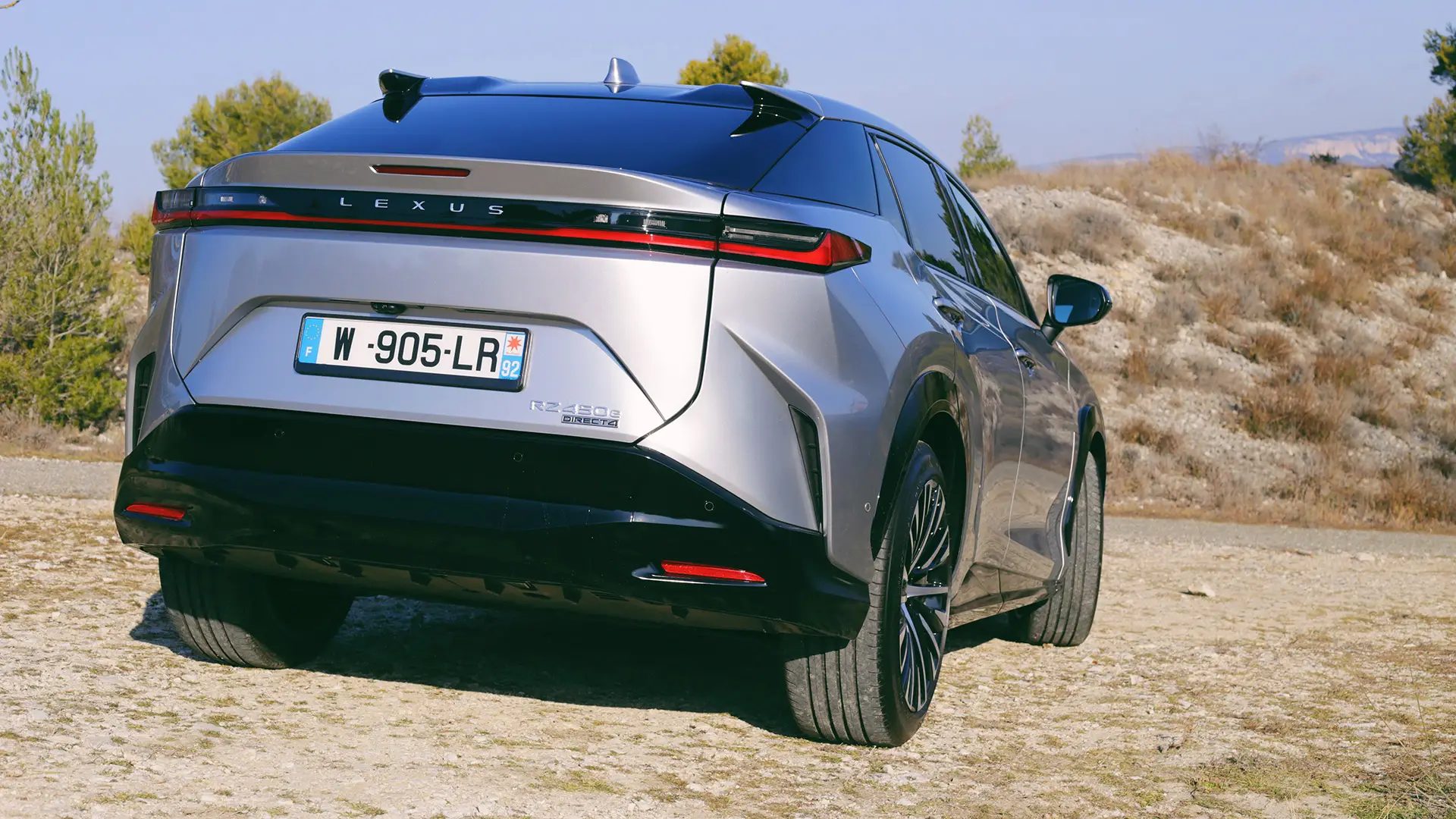
Its brakes provided more than enough stopping power and I especially dug the pedal’s feel and action: it wasn’t grabby, yet possessed great firmness and its positioning made it easy to jump between pedals for precision, spirited inputs on fun sections of road.
The powertrain consists of a 150-kW motor on the front axle and an 80-kW motor on the rear axle. Lexus’ Direct4 powertrain has the ability to distribute as much as 100% of output torque to either axle, taking g force, wheel speed, steering angle, as well as throttle and brake inputs into consideration to determine how power gets split.
When I asked Yushi Higashiyama, RZ Assistant Chief Engineer, whether this system would ever simulate any form of lock-up (read: drift mode), he said that it isn’t possible, even if the driver can “turn off” traction control.
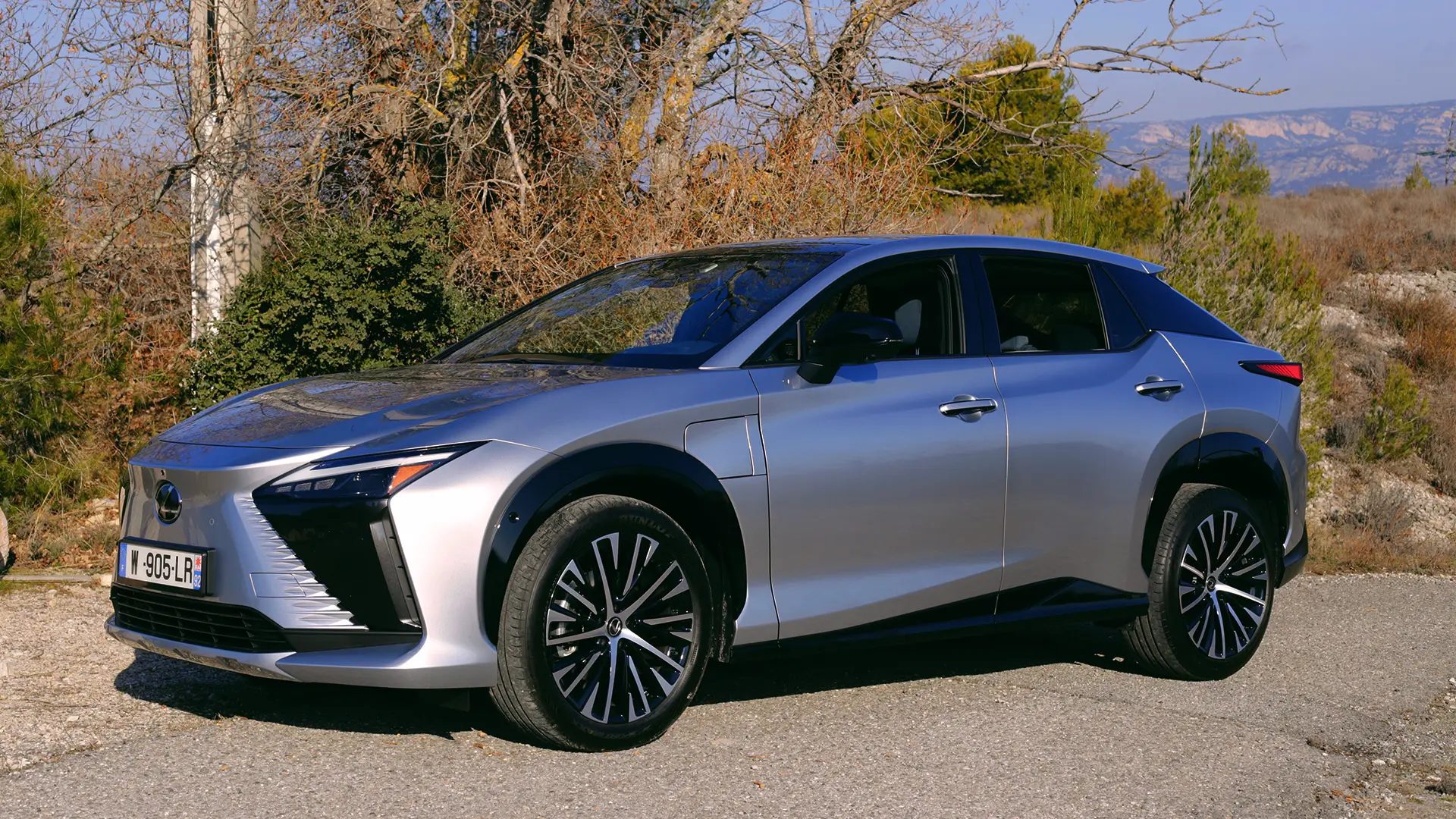
The 2023 RZ 450e’s winning hand is a full house of fun driving dynamics and luxury-filled spaciousness. I really enjoyed its agility-centric driving experience and its low, very driver-centric cockpit. The yoke means an extremely clear view of the instrument cluster, lending to a real command-center-like vibe that’s compounded by the fact that it feels like you do indeed sit in the RZ rather than atop it like in other crossovers.
A full range and charging test will have to wait until we can get our hands on the RZ for a longer loan, but Lexus claims a max range of 220 miles with the base 18-inch wheels (20-inch wheels lops that down to 196 miles) and DC fast charging from zero to 80% battery in just 30 minutes.
Lexus RZ 450e Features, Options, and Competition
The RZ 450e starts at $59,650 for the base Premium trim with the range-maximizing 18-inch wheels, whereas opting for 19-inch wheels commands $60,890. To reach the top-tier Luxury trim where 20-inch wheels are standard, it’ll cost $65,150. In addition to larger wheels, this trim level includes a few minor interior changes, plus expanded interior lighting and surfaces covered in something called Ultrasuede.
As far as how the RZ stacks up against other luxury automakers’ offerings, there isn’t a whole lot of direct competition just yet. There’s the BMW iX xDrive50, but that starts at a significantly larger stack of cash at $87,100. Though, the Mercedes-Benz EQB E300 4Matic is closer considering its $54,500 starting price. Though, the Benz’s specs are a bit less enthusiastic: zero to 60 mph in seven seconds and only slightly more range. Finally, there’s the O.G. Jaguar I-Pace which starts at $71,000, makes noticeably more power, and has a tad more range.
Though, its most direct competition might be the Genesis GV60, an equally handsome, sporty, and compact offering that sports similar range, power, and pricing. For those after the best-possible sporty luxury crossover comparison, it doesn’t get any closer than these two.
Value and Verdict
The 2023 Lexus RZ 450e is a compelling offer in the luxury crossover EV market, especially for consumers who are after intuitive tech, an overall roomy and comfortable interior, and enough familiarity to make the transition into EV ownership as smooth as possible.
Lexus is reaching out to many different corners of the market with a fun-to-drive, comfortable, tech-laden crossover, which fits a lot of body types and even looks rather good to boot. It’s a solid first step into EVdom, but the only question mark revolves around whether its range and charging capability will be enough to keep up with ever-advancing technology—especially for a brand that isn’t known for always keeping up with the most cutting-edge tech.



